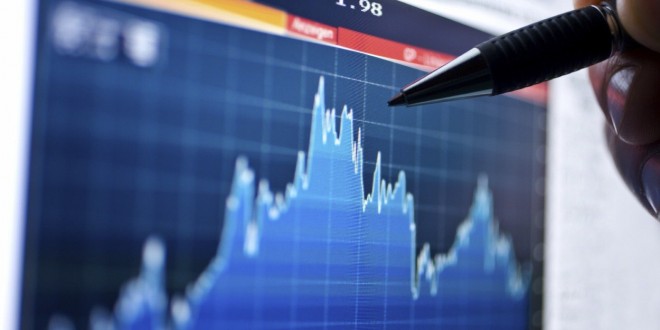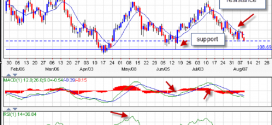Chart TIME FRAMES:
Chart timeframes range between , 1 minute 1 hour , 1 day to 1 week.
Larger time frames, tend to provide more reliable price signals. This means that a trend formation on weekly or daily chart has more weight than that of a 1 hour or 4 hour. A trading pattern on an hourly chart will have more reliability than a 5 minute chart etc etc.
Trading from a 1 hour chart is more reliable than a 30 minute chart , and a Daily chart is more reliable than a 4 hour chart in terms of perceiving a trend bias as well as identifying price action trading patterns.
Again, the higher the time frame, typically the more weight each signal or pattern has.
TRENDS :
Market direction is called a trend or market bias and following the trend is important for forex and Market direction is called a trend or market bias and following the trend is important for forex and Binary Options traders.
The most obvious trend is seen on a daily chart, if its heading in one direction, from left to right, either up or down, it’s a trend. Trends may be small or large in size, its depends on your time horizon and time frame.
Short term counter trend pressure (movements against the broader trend) tend to be aborted and result in subsequent failures. Over 70% of counter trend movements fail, so it’s important we try to stick with the broader trend where possible.
Dominant market trends are like comparing a cruise liner to a runabout speed boat, dominant trends are slow, cumbersome and take a long time to gain momentum. They are the most important influence on price behavior on all time frames being traded.
Short term trends that are in line with the long term trends tend to result in continuation and increase profit potential as well as increase risk reward scenarios.
Facts about the market :
Large players “Hedge Funds”, “Banks” take positions with a very informed bias, This ebb and flow creates market movement, market rotation and price action.
There is no distinguishing factor that drives a market movement, it is a group of catalysts which create turning points, volatility and trends.
Prices move around a central point, that is called the “MEAN” or moving average. Trending or rotative price behavior will always be either moving back towards the mean or away from the mean. As traders,
when a definite trend is identified, we trade in line with the direction of the slope of the mean. Advanced traders will also trade from extremes (areas distant from the mean), in attempt to capture profit as price rotates back toward the mean. However, they will mostly employ this method once a price signal is printed. Trading from extremes is more profitable when there is no major trend pressure, IE: sideways to neutral market periods.
Trading with a trend , and trading from extremes are 2 different trading strategies and will be discussed later in this course in detail. The most reliable events in markets arise from the mean (average price), static support and resistance (simple horizontal levels), dynamic moving support (trending moving averages, swing points /pivot areas) and of course, price action trading signals.
Counter trend trades have less chance of success, unless the price action signal is from a major level, we avoid fighting momentum.
Every trading pattern or event in the market will always fall back on the above variables. Is the trade in line with the trend, or is it moving back to the mean, and is against the trend etc etc?. These are questions we must learn how to answer, as well as trade upon.
 Forex Winners | Free Download Downlod free trading sysrems , indicators and forex E-books
Forex Winners | Free Download Downlod free trading sysrems , indicators and forex E-books

